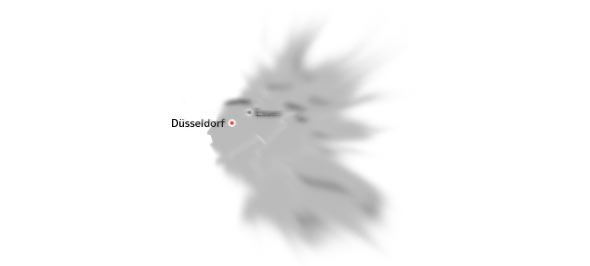Beyond Düsseldorf, Beyond Narratives

In early August, I was teaching two classes on the history of the photobook. During one of these classes, I made a brief comment on German photography. I don’t remember the context any longer, and it doesn’t even matter. What did - and still does - matter is the reaction of one of my students (herself a German). She noted that when I said “German” I was really only talking about the so-called Düsseldorf School (the Bechers and their various students), and while prominent the school hardly represents a fair sample of German photography. That’s correct, and I would write “of course” if it wasn’t for the fact that usually, the Düsseldorf School is taken as German photography. (more)
Needless to say, you could easily argue that the Düsseldorf School has come to represent German photography because some of its photographers have had such success. It’s a simple argument, and it does hold some water, even though it clearly has some leaks. How about Wolfgang Tillmans? Jürgen Teller? Joachim Brohm?
But if we forget about this game of names a little talking about which photographers are currently famous for whatever reason (art-market success, museum shows, etc.) isn’t even that interesting. What we do have to realize is that simple narratives (such as Düsseldorf School = German photography) can lead to all kinds of problems.
The first - and very obvious - problem here is that all those photographers who don’t hail from Düsseldorf are often forgotten and/or ignored. You might say that, oh well, that’s too bad for them. But in fact it’s too bad for us (and for them, of course), especially if they happen to produce work that deviates a bit from the usual Düsseldorf stuff (let’s ignore the fact that the school isn’t nearly as homogeneous as it’s presented). Of course, photography by the Bechers and many of their students is great as a showcase of how Germans are devoid of emotions and whatever other lazy stereotype you can come up with. But if all you’re interested in when reading about photography is to get stereotypes confirmed why even bother?
Going beyond stereotypes and lazy narratives, and leaving the Düsseldorf School = German photography case, I recently reviewed Gerry Badger’s new book, The Pleasures of Good Photographs, which contains a fantastic essay entitled From Diane Arbus to Cindy Sherman: An Exhibition Proposal. In his essay Badger proposes an exhibition (From Arbus to Sherman: American Women’s Photography, 1965-1985):
Featured in this exhibition would be such relatively overlooked artists as Judith Goldeb, Bea Nettles, Marcia Resnick, Joyce Neimanas, Susan Rankaitis, Eileen Cowin, Barbara Crane, Betty Hahn, Jo Ann Callis, Joan Lyons, Ellen Brooks, Barbara Kasten, Nancy Rexroth, and Barbara Blondeau, to name a few.Badger also discusses why these photographers might not have enjoyed the same fame as many of the male photographers from the same era. Boiling his argument down to the following quote simplifies it a little bit, but not much:
It was not that [MoMA’s John] Szarkowski specifically ignored women photographers […] but the kind of documentary, usually street-based photography that he espoused was largely a male preserve.And it was John Szarkowski who came to define American photography during that era. So we see that simple narratives - or choices, if you’re uncomfortable with the term “narrative” in this context - have consequences.
This is not to say that the situations I just talked about are comparable if viewed side by side. My main point is that if we want to get the most out of contemporary photography, we must resist simple narratives.
Of course, once you move into the realm of history you will always have to present a somewhat simpler picture. But it’s important to realize that that is what you’re doing: Dealing with a simpler picture. There is no reason why history cannot be re-written or modified.
As Badger notes, it is about time the history of American photography is getting revised a bit, to acknowledge the work of all the female photographers who did not fit into Szarkowski’s favourite style of photography. What is more, it’s not difficult to connect the choices made forty years ago with the situation female photographer still face today.
And while we’re at that we might as well look at other ideas we cling to and see whether we aren’t missing anything.
Getting back to where I started, as much as I like some of the photography that was (and, to a lesser extent, still is) coming out of Düsseldorf, I’m really tired of seeing the same breathless articles (or exhibitions) about the same artists.